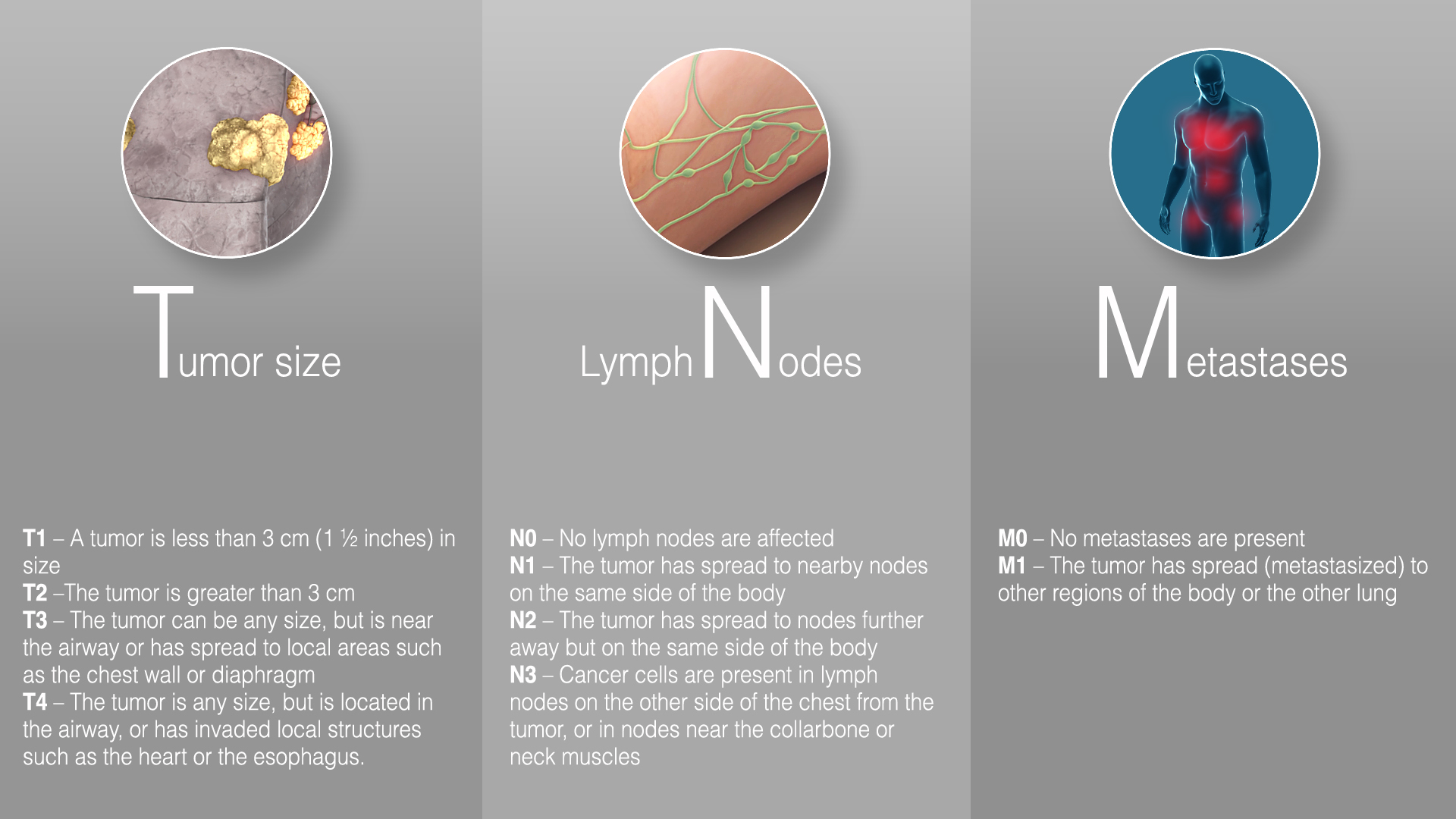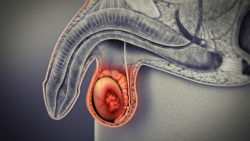Staging is the process of finding out how widespread the cancer is at the time of diagnosis. Determining the stage of breast cancer is helpful in determining the treatment method best suitable for it as well as how successful it is likely to be.
Doctors commonly use the TNM system to identify the stage. The results from diagnostic tests and scans are used to answer these questions:
Tumor (T): How large is the primary tumor? Where is it located?
Node (N): Has the tumor spread to the lymph nodes? If so, where and how many?
Metastasis (M): Has the cancer metastasized to other parts of the body? If so, where and how much?

The results are combined to determine the stage of cancer for each person.
There are 5 stages:
- Stage 0 is noninvasive ductal carcinoma in situ (DCIS), in which the cancer is limited to the inside of the milk duct.
Stages I to IV describe invasive breast cancer.
- Stage I cancers are relatively small and have either not spread to lymph nodes or have spread only to a tiny area in the guarding periphery of lymph node.
- Stage II cancers are, naturally, larger than their stage I counterparts, and they have already spread to a few nearby lymph nodes.
- Stage III tumors are large that grow into nearby tissues and spread to many nearby lymph nodes.
- Stage IV is the metastatic breast cancer stage, wherein the cancer has spread beyond the breast and lymph nodes to other body parts.
According to the American Cancer Society, the 5-year survival rates decline quickly as breast cancer proceeds to the next stage. Below are the survival rates against each stage of breast cancer:
In Stage 0, there is no evidence of cancer cells or even abnormal non-cancerous cells breaking out of the part of the breast in which they started, or getting through to or invading neighbouring tissue.
Treatment by Stage
The breast cancer treatment depends on several factors including the rate of its growth (some tumors are smaller but grow rapidly, while others are larger and slowly expand), the age and health of the woman, and most importantly, whether the tumor has female hormones or other genetic factors, such as the HER2 oncogene, that make it grow faster.
For Stage 0 or DCIS:
- Smaller DCIS tumors can be removed through a lumpectomy surgery , in which the abnormal cells and some breast tissue is removed, and in some cases, a mastectomy, in which the breast is removed. Post mastectomy, breast reconstruction surgery is often opted by many women.
- Radiation therapy is usually performed after lumpectomy to kill any abnormal cells that might have been missed. This lowers the risk of getting another breast cancer.
- Hormone therapy may also help prevent more cancer from developing in either breast after surgery.
For Stage 1:
In this stage, women usually do well with a combination of following treatments.
- Surgery is the standard treatment for this stage. Since the tumor is small, a lumpectomy can be effective. In case of either lumpectomy or mastectomy, the surgeon will likely take out one or more lymph nodes.
- Women with stage I cancer who get a mastectomy sometimes need radiation, too.
- Chemotherapy after surgery can lower the risk of the cancer coming back, especially in case of larger tumors. Chemo can be taken in several ways- through pills or liquids, or putting the drugs directly into the veins. The treatment is usually given in cycles that allow the body to have breaks in between.
Some tumors (called hormone receptor-positive cancer) use hormones to grow. For such tumors, hormone therapy is a good option after surgery. The medication helps prevent tumors from getting hormones. Tamoxifen works for all women, while anastrozole (Arimidex), exemestane (Aromasin), and letrozole (Femara) are prescribed for postmenopausal women.
Some women who haven't even reached menopause, consider having their ovaries removed to stop the synthesis of cancer-promoting hormones.
Targeted therapy is a newer treatment. About 20% of women with breast cancer have excess amounts of HER2 protein that sometimes makes the cancer spread quickly. Trastuzumab (Herceptin) is a drug that's been approved to treat women with HER2-positive cancer. It stops this protein from making the cancer grow and makes chemotherapy more effective.
Some latest findings
- Targeting specialized cancer cells
- Medical University of Vienna has revealed that surgery without any drug treatment cannot benefit a woman with metastasized breast cancer.
- No reopening of lumpectomy site
Researchers at the University of Missouri-Columbia, have linked natural and synthetic progestins to the rare cancer cells that determine the rate and extent of spread of cancer, and hence, identify immunotherapies to stop the spread of the disease.
About 25% of the women who go through lumpectomy to get rid of breast cancer, often need a second surgery. Recent guidelines from the American Society for Radiation Oncology and the Society of Surgical Oncology have significantly reduced the number of women going through a re-excision. The guidelines state that clear margins should be the standard for lumpectomy, as opposed to certain width of margin. The debated margin width doesn’t matter as long as there is no ink on the invasive cancer tumor. Note: This isn’t done for stage 0 cases.
References:
- Breast Cancer: Treatment Options
- Breast Cancer: Treatment by Stage
- The latest breast cancer research findings









